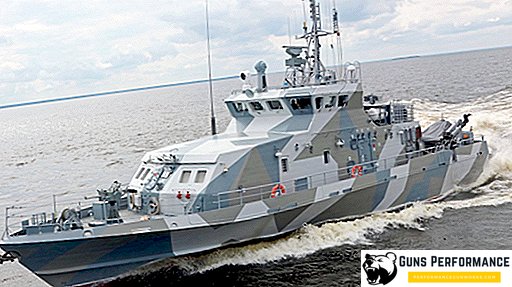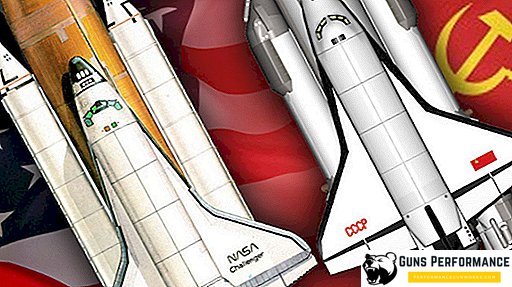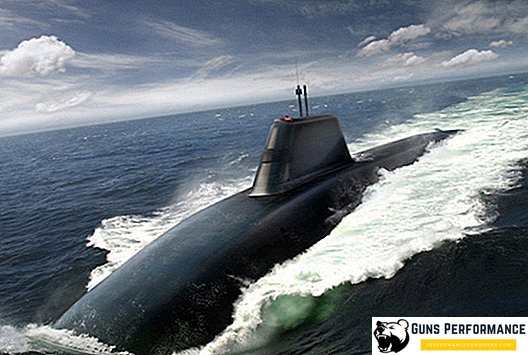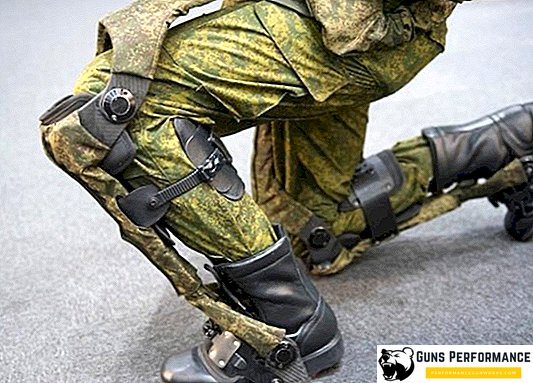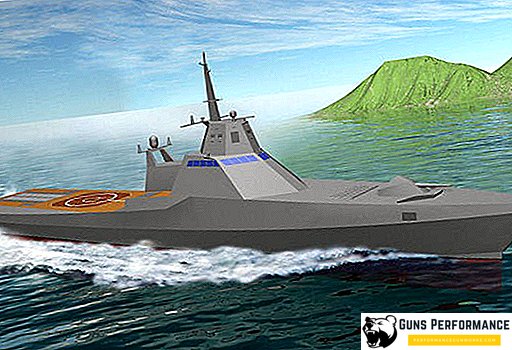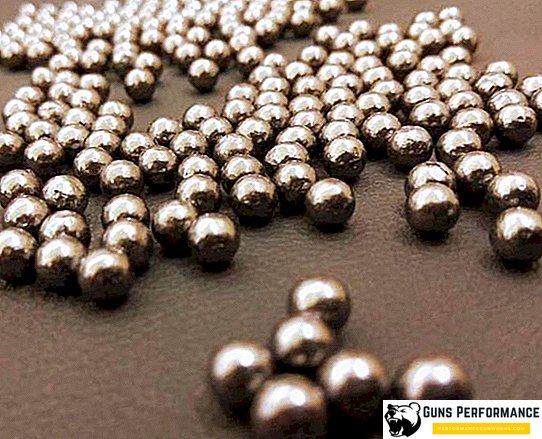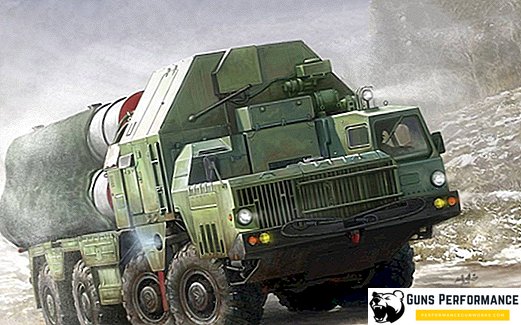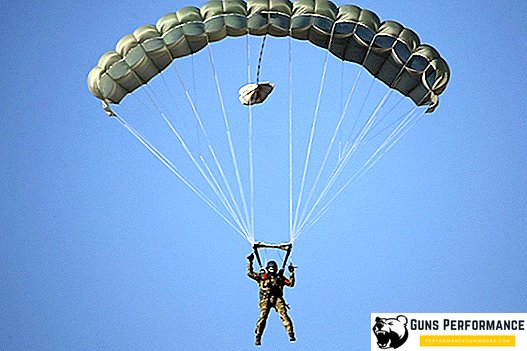The legendary, glory-covered Soviet medium tank T-34 was in service with the Red Army from December 1939. Its design marked a qualitative leap in tank construction. It harmoniously combined protivosnaryadnuyu reservation with powerful weapons and reliable chassis. High protective properties provided by the use of armored thick rolled sheets and their rational inclination. Armament this tank corresponded to the best examples of heavy tanks. High mobility provided a specially designed powerful diesel engine and wide tracks.
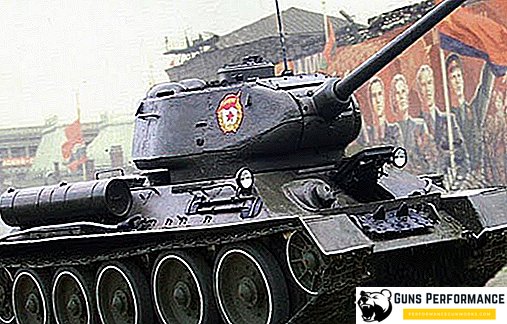
During the Great Patriotic War, along with increasing the production of tanks for the warring army, intensive work was carried out to improve the design of the tank and simplify its manufacturing technology. The original versions of the welded turret were replaced with a more efficient cast hexagon tower. The life of the engine has been increased by the use of new air cleaners and lubricants, as well as an all-mode regulator. More perfect main friction and the introduction of the gearbox with five steps significantly increased the speed of the tank.

The first samples of T-34 tanks, released in 1940, had the following technical characteristics:
- Mass assembly - 26 tons.
- The number of crew - 4 people.
- Frontal armor - 45 mm, slope - 30o, turret - 52 mm with a slope of 60o, sides and stern, respectively, 45 mm and 45o, roof and bottom - 20 mm.
- The power unit - diesel engine B-2-34, power 500 hp
- The number of high-speed transmissions - 5.
- Tank capacity for fuel - 450 l.
- Armament - gun L-11 76.2 mm, two DT machine guns 7.62 mm. Ammunition - 77 shots and 3906 cartridges.
- Dimensions: length - 5920 mm, width - 3000 mm, height - 2410 mm.
- Cruising on rough terrain - 225 km.
In the year 1941, the cannon was replaced with an F-34 of the same caliber, but with much more power. In the year 1942, taking into account the shortcomings of the previous models, they increased the thickness of the hull and turret armor to 60 mm and installed additional fuel tanks. Weaknesses were taken into account and in the year of release 1943 they used a six-sided turret with 70-mm thick armor and a commander's turret. In the year 1944 the name of the tank changed - T-34-85. He had an enlarged tower, in which 3 people were already placed, armor was increased to 90 mm thick, new DTM machine guns were installed.

From the very beginning, the tank was designed according to the classical scheme: the device of the front part was the fighting compartment, including the turret, the rear — the engine-transmission compartment and the drive wheels.
The main parts of the design of the T-34 tank were:
- The body is divided into functional areas.
- Power plant with transmission.
- Complex weapons.
- Means of observation.
- Chassis.
- Electrical equipment.
- Means of communication.
- Tank hull.
It was welded from rolled armored plates. The aft upper plate was fastened on two hinges, as well as bolts to the lower aft and side plates. When the bolts were unscrewed, it could be tilted back, thus providing access to the engine. In the upper front plate there was a hatch for the driver, on the right - a ball mount for a machine gun. The upper side plates had a slope of 45 °, the lower ones were mounted vertically. There were four holes for balancing the rollers.

The bottom of the case was usually made of two sheets, which were butt-welded to the overlay on the seam. On the right, in front of the bottom, before the location of the machine gunner, a hatch was made for the emergency exit. Hatches were also cut through which fuel was drained from the tanks, oil from the gearbox and the engine. Painting the tank provided his disguise on the ground.
Inside the hull, the T-34 tank was divided into functional zones. Front housed the office of management. There were a mechanic-driver with a gunner-gunner. It also installed the pedals and levers of control drives, sensors, control and measuring instruments. Behind the department of command, there was a fighting unit, including a tower, in which the crew commander and gunner were located, and in the T-34-85 there was also a loader.

Power plant with transmission
This is the next functional area. She was separated from the combat compartment by a steel removable partition. In the center of the power zone was installed engine. On the sides - oil tanks, water radiators and batteries. In the roof they cut out a hatch with an armored cover through which access to the engine was carried out. On the sides there were oblong slots for air flow. They were closed with armored shutters.
There was a transmission or powertrain compartment in the aft section. This is a set of mechanisms that transmit torque on the crankshaft of the engine to the drive wheels. As a result, the speed of the tank and tractive forces vary over a wider range than the engine allows. When moving from its seat, the main clutch smoothly transfers the load to the engine, smoothing out sharp changes in the number of revolutions of the crankshaft and the speed of the tank. Its other function is to disconnect the engine from the gearbox during gear shifting.

The gearbox is applied manual, five-speed - four gears to move forward and one - back. Switching - through the drive control. So that the T-34 tank could turn, it was necessary to slow down the caterpillar, in the direction of which the turn was made. The braking system was based on floating belt brakes. They can be activated from the managing department. For this, there are right and left levers on the sides of the driver, as well as foot drives.
In addition to the main clutch, gearbox, final drives and brakes, the transmission section also included an electric starter, fuel tanks and air purifiers. In the roof of the compartment was provided with a hatch rectangular duct, closed by a metal grid. Under it were adjustable armored shutters. In the stern stove, exhaust hoods and two brackets for the installation of smoke bombs were strengthened.

Armament mounted on a medium tank T-43
The main armament, which had a tank T-34, originally served as a semi-automatic 76-mm gun L-11 1939 release with a wedge vertical shutter. In 1941, it was replaced by an F-32 cannon of the same caliber. Later, the T-34-85 received an 85mm D-5T cannon, and then a ZIS-S-53. The tower had the ability to rotate, so the gun and the machine gun paired with it could conduct a circular fire. The telescopic sight ensured a firing range of almost 4 km in direct fire, and from a closed position - up to 13.6 km. The range of a direct-hit armor-piercing projectile reached 900 m. The tower was rotated using a manual or electric drive. It was mounted on the wall near the gun. The maximum speed of rotation from the electric motor reached 30 degrees per second. Vertically, the pickup was made manually by a sector lifting mechanism, also located on the left side of the gun.

Shooting could be carried out both mechanically and electrically. Ammunition consisted of 77 shots. It was located in the aft area, on the racks, as well as in the clamps on the starboard and in the boxes at the bottom of the combat compartment. Machine guns were equipped with 31 magazines with 63 cartridges in each. In addition to the main ammunition tankers provided cartridges, pistols, machine guns and grenades.
Chassis
The chassis of the T-34 tank was a tracked propulsion unit with suspension. They provide high permeability. It has two track chains, two leading and guiding wheels and 10 rollers. The track chain contains 72 tracks with a pitch of 172 mm and a width of 500 mm. The weight of a caterpillar is 1070 kg. Cast drive wheels were used to rewind the tracks and their tension.
The suspension in the T-34 tank was with helical coil springs. On the front rink double spring. It was located vertically in the bow and protected by shields. For the remaining rollers, the suspension was placed obliquely in the mines of the tank hull. Basic skating rinks fastened on axles with bearings, pressed into balancers. All rollers are double rubber tires.

Electrical equipment
The electrical equipment of the T-34 tank included both sources and consumers of electricity, including:
- Electric starter.
- Electric motor to ensure the turret turns.
- Cooling fans.
- Electric trigger gun, as well as coaxial machine gun.
- Electric heaters (it was installed in the post-war samples of the tank) and the oil pump.
- Devices alarm and lighting.
- Heater sight.
- Radio station
- Intercom.
- Electricity sources included a generator and 4 batteries in pairs on both sides of the engine. The system voltage is 24 V, the generator power is 1 kW.
Means of communication
The telephone and telegraph radio station provided two-way communication between the tank and other objects. The range depended on the time of year and day. She was the largest on the phone with a four-meter whip antenna in the winter. In the summer, especially at night, the level of interference increased, which reduced the communication range.

The transceiver and its power supply unit were attached with brackets to the rear and left sheets of the tower behind the seat of the tank commander. In 1952, a radio station was installed, working as a telegraph for reception and transmission. Intercom in the tank has been updated. Now it consisted of several devices - for the commander, the gunner and the driver. The device provided communication between the crew members among themselves, and for the gunner and the commander - also with external respondents.
The organization of the crew of the tank
The best option, what composition should be the crew of the T-34-85 - five people:
- The commander of the tank.
- Driver mechanic.
- Gunner-gunner.
- Gunner.
- Charging.
The tank commander is located on the seat behind the gunner, from the gun to the left. For convenience, it serves as a commander's turret with surveillance devices. Tasks of the commander: review and control of the battlefield, instructions to the gunner, work with the radio station, general leadership of the crew.

The driver is on the seat, which can be adjusted in height. In the front sheet in front of him there is a hatch with an armored cover. Two periscopes are permanently installed in it. Their prisms are covered below with protective glass that protects the driver's eyes from debris. Above the periscopes are put soft headrest to protect the driver's head from possible injuries. Instruments and mechanisms for the driver:
- Control levers.
- Backstage from the gearbox.
- Manual fuel feed.
- Brake.
- The pedal of the main clutch.
- Control-indicator of control devices.
- Two compressed air cylinders used in the air engine start.
- Electrical appliance cover.
- Tachometer.
- Starter button.
- Speedometer.
- Fire extinguisher.
The gunner-gunner is located on the right side of the driver. His task is to fire from a machine gun inserted into the ball of the upper hull front plate. For aiming at the target used a special telescopic sight. The shooting is carried out by pressing the trigger for several shots in bursts from a distance of up to 800 m. The machine gun is equipped with automatic, powered by the energy of powder gases.

The gunner is located in the tower, on the left side. At the direction of the commander or by selecting a target on his own, he directs a cannon and a twin machine gun at the target. It then fires the trigger with an electric trigger. The gunner has a periscopic sight, providing a fourfold increase. A cannon with a twin machine gun is aimed at the target by a turret turning mechanism and also by raising the cannon.
Charging is located on the right side of the gun. At the direction of the commander, he chooses the type of shot, how to load the cannon, reload the paired machine gun, observe the progress of the battle. His seat is suspended by three straps - two from the turret, the third - from the gun cradle. Changing the position of the seat belts is height adjustable.

To ensure the implementation of urgent repairs and the necessary security measures inside the tank are installed two cylinders of carbon dioxide fire extinguisher. Sets of spare parts, accessories and tools are placed not only inside the tank, but also outside. These include: towing cable, tarpaulin, spare parts for guns, reserve tracks, with and without ridges, fingers of track tracks, and entrenching tools. At the stern are installed smoke bombs.
Service tank T-34 after the Second World War
After the Second World War, foreign-made tanks were used in Yugoslavia, including the Russian T-34, transferred by our country in 1945. They were distributed in two tank brigades. The Yugoslav leadership attempted to master the production of T-34-85 tanks. The task was to increase the service life of the machine. It was conceived many changes in the design. For example, they suggested installing another diesel engine with an improved transmission, adjusting the hull and turret. This made it possible to reduce the area of the frontal surface of the tank and reduce the risk of hitting it in front.

In the 40s, Poland, and behind it Czechoslovakia also decided to organize the release of T-34 tanks. Received technical documentation, painted technology and specialists from manufacturers. The first production tanks appeared here in 1951. They were the same size, but the shape of the tower was changed, the engine was adapted for different types of fuel, had a light start in the winter. Additional fuel tanks increased the range to 650 km. Installed devices with night vision for the driver. New radio stations, intercoms TPU-47, special observation devices of the commander were used. Increased the speed with which the tower rotates.
The production of T-34 tanks in these countries lasted for five years. From here they entered the armies of many states, including the Warsaw Pact, the DPRK and the PRC. To a varying degree, they participated in many military conflicts that took place in the second half of the 20th century. They fought successfully in Korea, Pakistan and Vietnam. The traditions laid by the first designers and creators of the T-34 medium tank are developed in new generations of combat vehicles.


